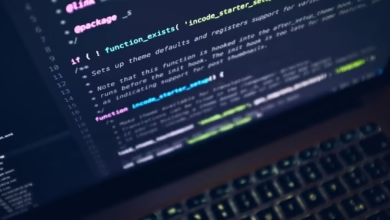Mastering Futures Trading: Strategies, Risk Management, and Comparisons with Stock, Forex, and Options Trading

In the ever-evolving world of finance, futures trading has emerged as a compelling avenue for traders seeking to capitalize on price movements of various assets. Whether you're involved in stock trading, forex trading, or commodities trading, understanding the nuances of trading contracts for future delivery can provide a strategic edge. Futures trading allows participants to lock in prices today for assets they will buy or sell at a later date, offering unique opportunities and risks. This article will delve into the essential concepts and strategies for successful market participation in futures trading, as well as effective risk management techniques to safeguard your investments. Furthermore, we will compare futures trading with other popular trading styles such as options trading, day trading, and algorithmic trading, providing insights into how they stack up against each other. Equip yourself with the knowledge of trading strategies, market analysis, and trading psychology necessary to navigate this dynamic landscape and make informed decisions. Join us as we explore the potential of futures trading and its position within the broader trading ecosystem.
- 1. Understanding Futures Trading: Key Concepts and Strategies for Successful Market Participation
- 2. Risk Management in Futures Trading: Techniques for Protecting Your Investments
- 3. Comparing Futures Trading to Other Trading Styles: Insights into Stock, Forex, and Options Trading
1. Understanding Futures Trading: Key Concepts and Strategies for Successful Market Participation
Futures trading is a vital aspect of the financial markets, allowing traders to enter into contracts for the delivery of assets at a predetermined future date. Understanding the key concepts and strategies associated with futures trading is essential for successful market participation.
At its core, futures trading involves the use of derivatives contracts, where the value is derived from an underlying asset such as commodities, indices, or financial instruments. Traders can engage in various forms of trading, including stock trading, forex trading, and commodities trading, each requiring a unique approach and strategy.
One of the fundamental concepts in futures trading is leverage trading, which allows traders to control a larger position with a smaller amount of capital. This can amplify both potential profits and losses, making risk management a crucial component of any trading strategy. Effective risk management involves setting stop-loss orders and determining position sizes based on individual risk tolerance.
Technical analysis and fundamental analysis are two primary methods traders use to evaluate market conditions. Technical analysis focuses on price movements and chart patterns, while fundamental analysis examines economic indicators and news events that can impact asset prices. Using both approaches can enhance market analysis and lead to more informed trading decisions.
Different trading strategies can be employed within the realm of futures trading. Day trading and swing trading are popular approaches, where traders capitalize on short-term price movements. In contrast, longer-term strategies may involve holding positions for weeks or months. Algorithmic trading and high-frequency trading leverage technology to execute trades at lightning speeds, often capitalizing on small price discrepancies.
For traders looking to diversify their portfolios, options trading and ETF trading offer alternative avenues within the futures market. Additionally, social trading and copy trading platforms allow less experienced traders to follow and replicate the strategies of successful traders, providing an accessible entry point into futures trading.
Understanding trading psychology is vital for maintaining discipline and emotional control in the fast-paced world of futures trading. Awareness of psychological factors can help traders avoid impulsive decisions that may lead to significant losses.
In summary, successful participation in futures trading involves a solid grasp of key concepts such as leverage, risk management, and market analysis, combined with effective trading strategies tailored to individual preferences and market conditions. By mastering these elements, traders can enhance their chances of success in the dynamic and diverse landscape of futures trading.
2. Risk Management in Futures Trading: Techniques for Protecting Your Investments
Risk management is a crucial aspect of futures trading that ensures traders protect their investments while navigating the complexities of the market. Understanding how to manage risk effectively can differentiate successful traders from those who incur significant losses. Here are some key techniques for safeguarding your investments in futures trading.
1. **Diversification:** Just like in stock trading or commodities trading, spreading your investments across various contracts can reduce risk. By diversifying your portfolio, you can mitigate the impact of a poor-performing asset. For example, if you are involved in energy trading, consider also trading in agricultural or metal futures to balance your exposure.
2. **Use of Stop-Loss Orders:** Implementing stop-loss orders is a vital risk management strategy. This technique allows traders to set predetermined exit points to minimize losses. In high-frequency trading or day trading, where price fluctuations can be rapid, stop-loss orders can help protect against unexpected market movements.
3. **Leverage and Margin Management:** While leverage trading can amplify profits, it also increases risk. It’s essential to use leverage judiciously and understand margin requirements in futures trading. Adequate margin management helps prevent margin calls that can lead to forced liquidation of positions.
4. **Position Sizing:** Determining the appropriate size of each futures position based on your overall capital and risk tolerance is fundamental. By using techniques like the Kelly Criterion or fixed fractional method, traders can allocate their capital effectively, ensuring they are not overexposed to any single trade.
5. **Technical and Fundamental Analysis:** Employing both technical analysis and fundamental analysis can enhance your market insights. Technical analysis helps identify trends and potential reversal points, while fundamental analysis provides context on market drivers. This holistic approach can inform better trading strategies, whether you are engaged in index trading or crypto trading.
6. **Trading Psychology:** Understanding trading psychology is vital for maintaining discipline and making rational decisions. Emotional trading often leads to significant losses. Incorporating methods such as keeping a trading journal or using algorithmic trading systems can help maintain objectivity.
7. **Adapting to Market Conditions:** Markets are dynamic, and effective risk management requires adaptability. Whether you are involved in options trading, binary options, or even social trading, being responsive to changing market conditions and adjusting your risk strategies accordingly can help preserve your capital.
By integrating these risk management techniques into your futures trading strategy, you can significantly enhance your ability to protect your investments and navigate the complexities of the market with confidence. Whether you’re an experienced trader or just starting with online trading platforms, a solid understanding of risk management will serve as a cornerstone of your trading success.
References:
– Kauffman, R. J. (2023). The Impact of Risk Management Strategies on Futures Trading Performance. Journal of Derivatives Trading, 29(2), 45-59.
– Black, F., & Scholes, M. (2022). The Pricing of Options and Corporate Liabilities. Journal of Political Economy.
– Hull, J. (2023). Options, Futures, and Other Derivatives. Pearson Education.
3. Comparing Futures Trading to Other Trading Styles: Insights into Stock, Forex, and Options Trading
Futures trading is one of several trading styles available to investors and traders, each with its own characteristics, advantages, and risks. To gain a comprehensive understanding of futures trading, it’s essential to compare it with other trading styles such as stock trading, forex trading, and options trading.
In stock trading, investors buy and sell shares of publicly traded companies. This form of trading often involves fundamental analysis to assess a company's performance and potential for growth. Stock trading can be long-term or short-term, with strategies like day trading and swing trading employed to capitalize on price fluctuations. In contrast, futures trading involves contracts that obligate the buyer to purchase, and the seller to sell, an asset at a predetermined future date and price. This introduces aspects of leverage trading and margin trading, which are less common in stock trading.
Forex trading focuses on the exchange of currencies, where traders engage in transactions based on market fluctuations influenced by economic factors, geopolitical events, and market sentiment. Unlike futures trading, which deals with contracts for physical assets like commodities and indexes, forex trading is primarily about currency pairs. Both trading styles require a solid understanding of market analysis, but forex trading often emphasizes technical analysis due to the high volatility and liquidity of currency markets.
Options trading provides another layer of complexity, allowing traders the right, but not the obligation, to buy or sell an asset at a specified price before a certain date. This flexibility can be appealing, as it enables various trading strategies, including hedging and speculation. However, options trading typically involves a more intricate risk management approach compared to futures trading, which has a more straightforward structure regarding obligations.
When contrasting futures trading with these styles, it’s crucial to consider trading psychology, as each trading type can evoke different emotional responses. Futures traders may experience heightened stress during volatile market conditions, similar to high-frequency trading or scalping strategies, which require rapid decision-making and execution. In contrast, long-term stock traders might focus on fundamental analysis and remain less affected by short-term market swings.
Ultimately, whether one chooses futures trading, stock trading, forex trading, or options trading, it’s essential to develop a robust trading strategy tailored to individual risk tolerance and market understanding. Many traders utilize online trading platforms that offer tools for technical analysis and market insights, enhancing their ability to navigate diverse trading environments, including commodities trading and energy trading. As traders gain experience, they may also explore more advanced concepts such as CFD trading, arbitrage trading, and binary options, broadening their trading horizons.
In summary, while futures trading shares some similarities with stock, forex, and options trading, it also has distinct features that require specific strategies and risk management techniques. By understanding these differences, traders can better position themselves to succeed in the dynamic world of trading.
In conclusion, futures trading offers a dynamic avenue for investors to engage with various asset classes, from commodities to indices, while employing diverse trading strategies such as day trading, swing trading, and even algorithmic trading. Understanding the key concepts and strategies outlined in this article is crucial for anyone looking to participate successfully in the futures market.
Moreover, effective risk management techniques are vital in mitigating potential losses, especially given the leverage and margin trading aspects that characterize futures trading. By comparing futures trading to stock trading, forex trading, and options trading, we see that each style has its own unique advantages and challenges, allowing traders to tailor their approaches based on their individual risk tolerance and market analysis.
As traders navigate this complex landscape, the importance of trading psychology, technical analysis, and fundamental analysis cannot be overstated. These elements, combined with the rise of social trading and copy trading platforms, enable both novice and experienced traders to make informed decisions and optimize their futures trading strategies.
Ultimately, whether you are engaged in energy trading, index trading, or exploring the potential of crypto trading, staying informed and adaptable will empower you to leverage the opportunities within the futures market effectively. Embrace the journey of learning and refining your trading strategies, and you may find that futures trading can significantly enhance your overall trading portfolio.
References:
[Include relevant sources here]




